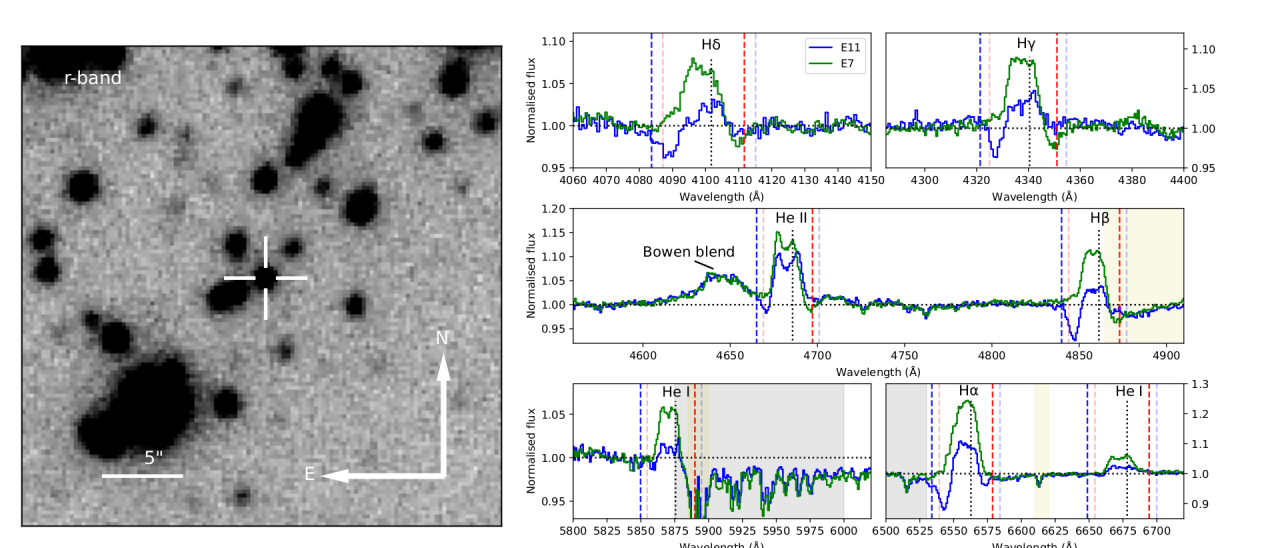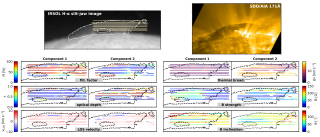Advertised on
Authors
Daniel
Mata Sánchez
Teodoro
Muñoz Darias
Montserrat
Armas Padilla
Jorge
Casares Velázquez
Manuel Ángel
Pérez Torres
References
The transient Swift J1727.8-162 is the latest member of the X-ray binary black hole family to be discovered. They are formed by a black hole and a low-mass star whose gas is stripped off and accreted to the black hole via an accretion disc. The high temperature of the accretion disc makes it shine in all energy bands up to X-rays, and is particularly bright during epochs known as outbursts.
In this novel study, published just a few months after the discovery of the system, we present 20 epochs of optical spectroscopy obtained with the GTC-10.4m telescope. The spectra cover the main accretion states and are characterised by the presence of hydrogen and helium emission lines, commonly observed in these objects. They show complex profiles, including double peaks arising from the accretion disc, but also blue-shifted absorptions (with blue-edge velocities of 1150 km/s), broad emission wings, and flat-top profiles, which are the usual signatures of accretion disc winds. Moreover, red-shifted absorptions accompanied by blue emission excesses suggest the presence of inflows in at least two epochs, a phenomenon only previously seen in another black hole.
We complete the study analysing the optical counterpart of the system both in outburst and in quiescence, using pre-outburst imaging from the public catalogue Pan-STARRS. The outburst amplitude of almost 8 magnitudes (a factor of 1000 in flux) supports an orbital period of ∼ 7.6 h, which favours an early K-type companion star. We also derive a distance to the source of 2.7 kpc, corresponding to a Galactic plane elevation of 0.48 kpc.
Based on these findings, we propose that Swift J1727.8−162 is a nearby black hole X-ray transient that exhibited complex signatures of optical inflows and outflows throughout its discovery outburst.



